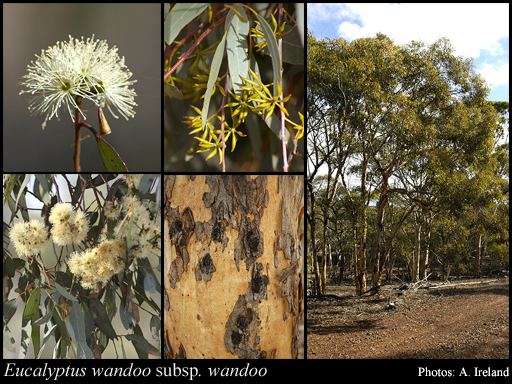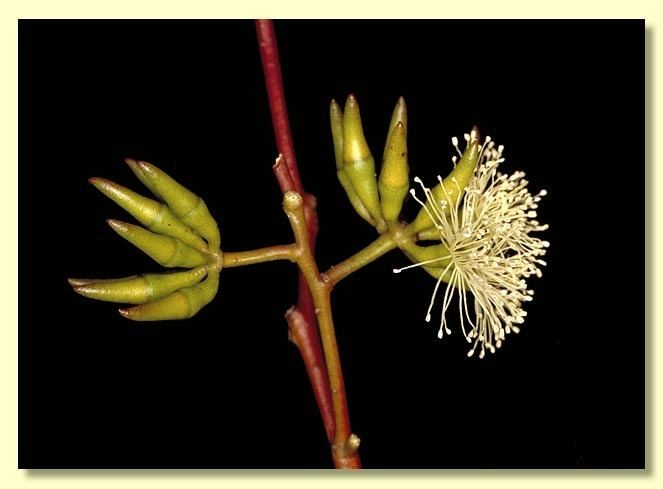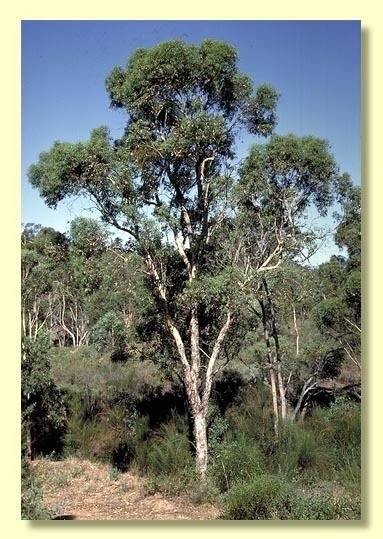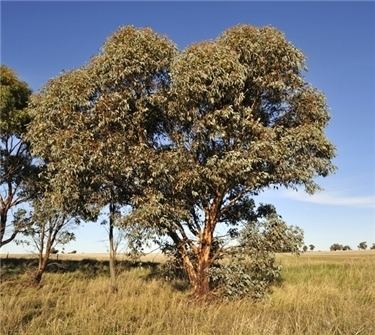Rank Species | Genus Eucalyptus Higher classification Gum trees | |
 | ||
Similar Gum trees, Corymbia calophylla, Eucalyptus salmonophloia, Eucalyptus loxophleba, Eucalyptus accedens | ||
Eucalyptus wandoo, commonly known as wandoo or white gum, is a medium-sized tree widely distributed in southwest Western Australia. The Noongar names for the tree are Dooto, Wandoo, Warrnt or Wornt.
Contents

Description
It grows as a small to medium-sized tree up to 25 metres (82 ft) in height. It has smooth bark, often in mottled patches of white, light grey, light brown light yellow and pink. Old layers of bark come of in flakes, and it is not uncommon for a few flakes to persist on the trunk for a long time. Young stems may be round or square in cross-section.

Adult leaves are usually a greyish-green or greyish-blue, the same on both sides, lanceolate, 7.5 to 12.5 centimetres (3 to 5 in) long, 1 to 2.8 cm (0.39 to 1.10 in) wide, on a petiole one to two centimetres long. Flowers are white, and occur in clusters of 9 to 17, and occur between March and April. Seed capsulaes remain on the tree until the following year and contain approximately 275 seeds per gram.
This is a lignotuberous species.

Eucalyptus capillosa is a closely related and very similar to E. wandoo. E. capillosa is found further inland than E. wandoo.
Taxonomy
This taxon was first published as Eucalyptus redunca var. elata by George Bentham in 1867. In 1934 William Faris Blakely promoted it to species rank, and, since there was already a species named Eucalyptus elata, renamed it Eucalyptus wandoo. The specific epithet "wandoo" comes from the Noongar name for the tree.
It is placed in genus Eucalyptus, subgenus Symphyomyrtus, section Bisectae, subsection Glandulosae, series Levispermae, subseries Cubiformes.
Two subspecies are recognised:
Distribution and habitat
Endemic to the Southwest Botanical Province of Western Australia, E. wandoo occurs from Geraldton to the south coast, and from the west coast inland as far as Narembeen. It grows in loamy and stony soils, in undulating terrain.
Decline of the habitat and reduction of the crown decline has been studied
Uses
The wood of this species is extremely dense, and is used for a range of heavy duty construction purposes, including as railway sleepers and wood flooring. There was once an industry in the extraction of tannin from the bark and wood. These days the wood is not much available, as the wandoo forests are preserved for recreation and watershed protection. Wandoo is also famous for the honey produced from its nectar.
